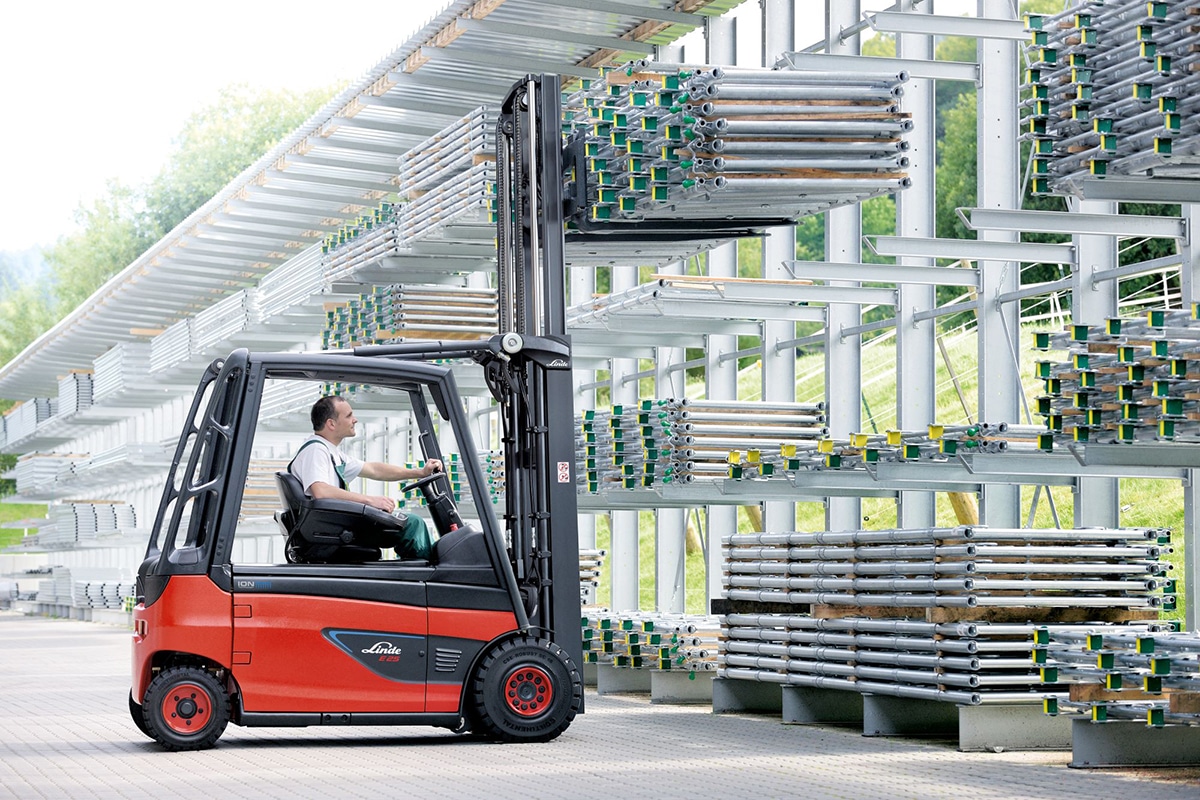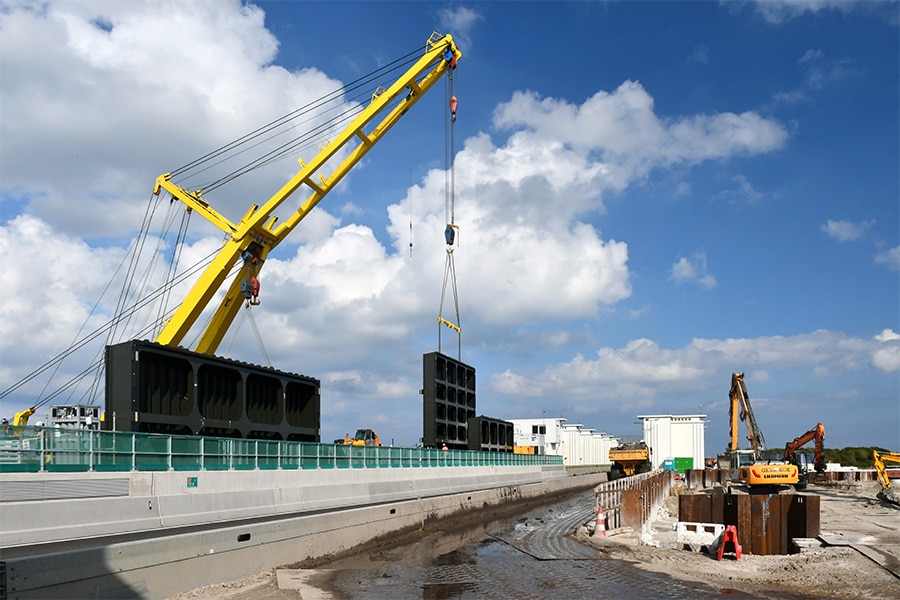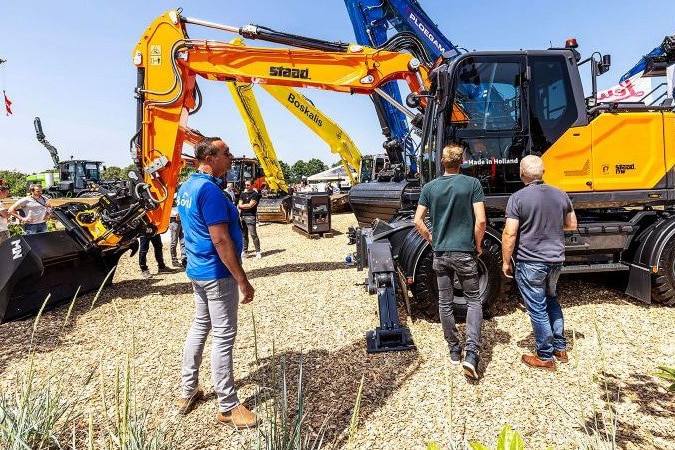
Treatment in shop and on location
To make bicycle bridge Tegenbosch future-proof, all bridge components were first provided with protective coatings of the highest quality separately and then as a whole. Cuijpers Group drew up a well-considered plan of action for this and carried out all the steps systematically.
To give the bridge optimal protection, all steel elements underwent a treatment of blasting, metallizing, two layers of mist-coat and two layers of coating. The challenge was in the ends of the steel elements, which had to remain free of coatings until assembly. These received the treatments after the bridge was assembled in Eindhoven. For each layer, a strip was taped off for back-stepping, which ensured that the coating layers at the assembly sites blended into the layers already applied in the shop. Because the coating layers were applied with back-stepping after assembly, the system became uniform on the entire bridge.
Blasting at the SA 3 level
Thanks to this approach, almost all processing could take place in the Cuijpers Group's shop in Elsloo. By blasting, the steel elements were deeply cleaned and at the same time slightly roughened for better adhesion with the metallization layer. "This required the standard SA 3," says Rob van Hengel of the Cuijpers Group. "That is the highest level of blasting where all the dirt is removed."

Metallizing
In metallizing - or "thermal spraying" - the elements were coated with a liquid alloy of zinc with aluminum. This, too, was done in the Cuijpers Group shop. "In this operation, the alloy was fed through a gun, heated, liquefied and applied to the surface," Stefan Dejalle explains. "With this, the substrate was highly protected."
Fog-coating - interlayers
"Because a thick layer of metallization was required, we applied two layers of mist-coat to prevent pinholes, or holes in the coating layer caused by gas bubbles," says Dejalle. Two intermediate coats were then applied as additional protection for the system, after which the elements were ready for transport to Eindhoven and assembly.
Working on location
Van Hengel: "Here, the ends were machined exactly the same. In order to provide the same high quality and spare the environment, the blasting work was carried out in mobile containers and the preservation work in specially built compartments. Then the bridge was cleaned and given the final coat."
The craftsmanship of the Cuijpers Group and the care with which the treatment was carried out were closely monitored by quality inspectors. Quality tests of blasting, salt tests, dust tests, adhesion tests and layer thickness measurements showed that a sample of high quality was delivered here. Bicycle bridge Tegenbosch is equipped with a system that will protect the bridge for years to come.



